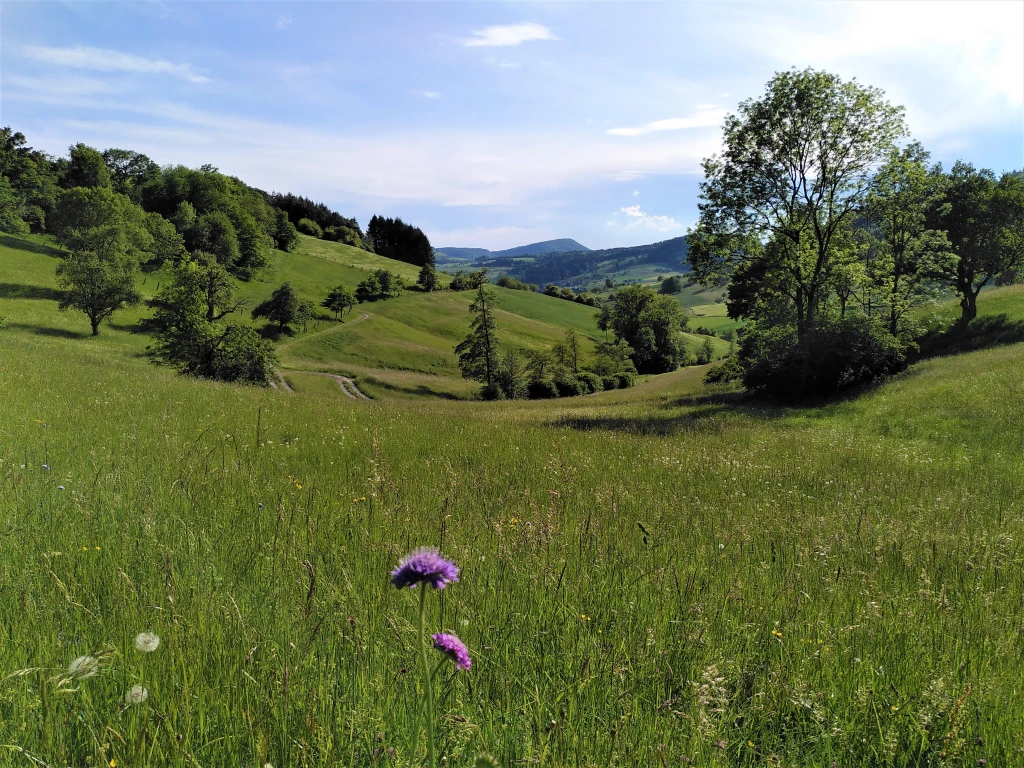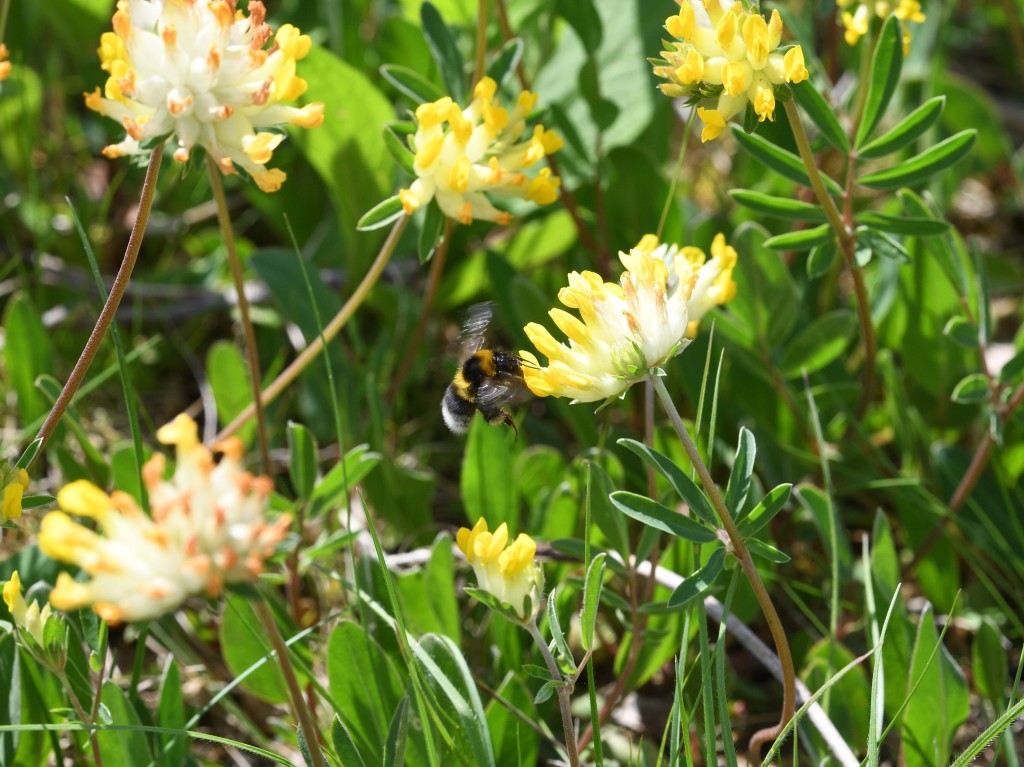Shortlisted for the Southwood Prize 2022
Corina Maurer talks us through her and colleagues’ research on how different kinds of habitats are able to maintain a diverse bee community throughout agricultural landscapes.
Habitats and bees
Open habitat mosaics, such as grasslands interspersed with hedgerows that existed more than 150 years ago, were home to very diverse wild bee communities. But, the once so diverse and extensively cultivated agricultural land has been changed into the intensively managed monocultures that we know today, with few natural habitats left. In such landscapes, it is difficult for bees to find suitable nesting places and floral resources in close proximity – which is a prerequisite for bees to successfully reproduce.
We know from many studies that the more (semi-) natural habitats such as grasslands, hedgerows or forests are left in a landscape, the higher the wild bee diversity will be in this landscape. But, which habitat types benefit wild bees the most? Does this change throughout the season? Are the same habitats important for rare (red-listed) bees and for crop pollinating bees? This knowledge is important to develop efficient measures for wild bee conservation in agricultural landscapes.
Data collection
To answer these questions, we collected data on flower-visiting wild bees in different habitat types spanning intensively and extensively managed meadows, perennial flower strips, hedgerows, and forest edges. This data was collected across several agricultural landscapes in the northern Swiss lowlands.
As well as the data I collected in 2020 for my Ph.D. project, we were able to include data from a previous project at our research institute that was collected in a similar manner. Additionally, the data included information about the flower diversity in all sampled habitat types. Equipped with this data set, I started to explore the relationships between wild bees and their preferred habitat types.
The findings
We found that habitat importance for wild bees varies throughout the season and for different bee groups. Extensively managed meadows sustained a high bee diversity throughout the season and were especially important for rare (red-listed) species, while perennial flower strips were particularly important in July and for crop pollinating bee species.
Yet, each habitat type harboured quite different sets of species, making a variety of habitat types essential for maximizing wild bee diversity in agricultural landscapes. In addition, a high local flower diversity in the habitat was more important than the surrounding landscape for sustaining diverse wild bee communities.
Based on our findings, we suggest the following measures to promote wild bees in agricultural landscapes:
- increase (native) flower diversity within habitats
- promote extensive management of meadows (in Switzerland this includes no fertilizer application and first cut after 15th of June)
- increase the number of different habitat types in a landscape to support a higher diversity of species.
About the author
Corina Maurer is a Ph.D. student at the federal research institute Agroscope in Zurich and at ETH Zurich. She is interested in the ecology of wild bees and other pollinators and how they respond to landscape changes such as agricultural intensification and urbanization.
Her dissertation research focuses on how such landscape changes influence the interactions between plants and pollinators and, ultimately, how this affects disease transmission between pollinator species.
With the findings of her research, she hopes to improve our understanding of the anthropogenic impact on ecosystems and to help find effective ways to conserve pollinators. Corina’s special interest in pollinators has its roots primarily in her undergraduate time, when she did her M.S. degree about the effect of habitat fragmentation on bumblebees at the University of Bern.
This research article, published in the Journal of Applied Ecology, is her first dissertation chapter, and she is grateful for the support and advice from all her coauthors and work colleagues.
Read the full article, “Different types of semi-natural habitat are required to sustain diverse wild bee communities across agricultural landscapes” in Journal of Applied Ecology
Find the other early career researchers and their articles that have been shortlisted for the 2022 Southwood Prize here!




